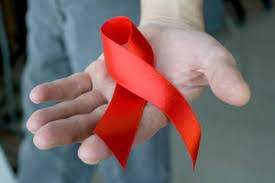World AIDS Day 2023: Busting Five Commonly Held Myths About HIV and AIDS
It’s critical to keep raising awareness and dispelling common misunderstandings about HIV/AIDS as the globe observes globe AIDS Day on December 1. Even with great advancements in our knowledge of the illness and its treatment, false information still circulates, creating stigma and impeding successful preventative measures. On this day, let’s debunk five widespread misconceptions about HIV/AIDS.
Myth 1: Only certain kinds of individuals are affected by HIV/AIDS
The idea that HIV/AIDS only affects certain groups of individuals, such as members of the LGBTQ+ community or injecting drug users, is among the most widespread fallacies. In actuality, HIV/AIDS may strike anybody, regardless of gender, age, ethnicity, or sexual orientation. Realizing that everyone is vulnerable is essential, and preventative methods have to be widely advocated and implemented.
Myth 2: Having casual contact might spread HIV/AIDS
Despite what the general public believes, informal contact such as handshakes, hugs, or sharing of utensils cannot transmit HIV/AIDS. The main ways that the virus spreads are via unprotected sexual contact, sharing infected needles, or nursing or pregnancy-related contact between an HIV-positive mother and her child. Eliminating unjustified anxiety and shame connected to routine encounters requires an understanding of the transmission mechanisms.
Myth 3: Dying from HIV/AIDS is inevitable
HIV/AIDS was formerly thought to be an unavoidable death sentence, but because to advances in medical care, it is today seen as a chronic illness that can be managed. When antiretroviral medication (ART) is used to suppress the virus, people with HIV may live long, healthy lives. For those impacted, early diagnosis, appropriate medical care access, and treatment compliance greatly enhance quality of life.
Myth 4: A person’s looks may indicate if they have HIV/AIDS
The presence of HIV/AIDS does not have a distinct appearance or physical expression. In its early stages, the virus may not show any symptoms, and those who are infected may seem healthy. HIV status determination based only on looks feeds stigma and prejudice. HIV testing is the only method to be certain.
Myth 5: HIV/AIDS is no longer a serious issue
Even with tremendous advancements in diagnosis and therapy, HIV/AIDS is still a major worldwide health concern. HIV continues to affect millions of people globally, and measures to prevent it from spreading are essential. In order to fight the illness and stop the spread of new infections, education, testing, treatment, and support services are crucial.
Let us reiterate our dedication to disseminating truthful information, eliminating stigma, and providing assistance to those impacted by HIV/AIDS on this World AIDS Day. Together, we can refute these misunderstandings and promote awareness in order to fight toward a future free of HIV/AIDS.







